Final design
Out of the three concepts, the choice went to concept 3. As can be seen in Figure 28, some features have been added or modified. In this chapter all features of the final concept are described and why the choice was made for this concept instead of the others.
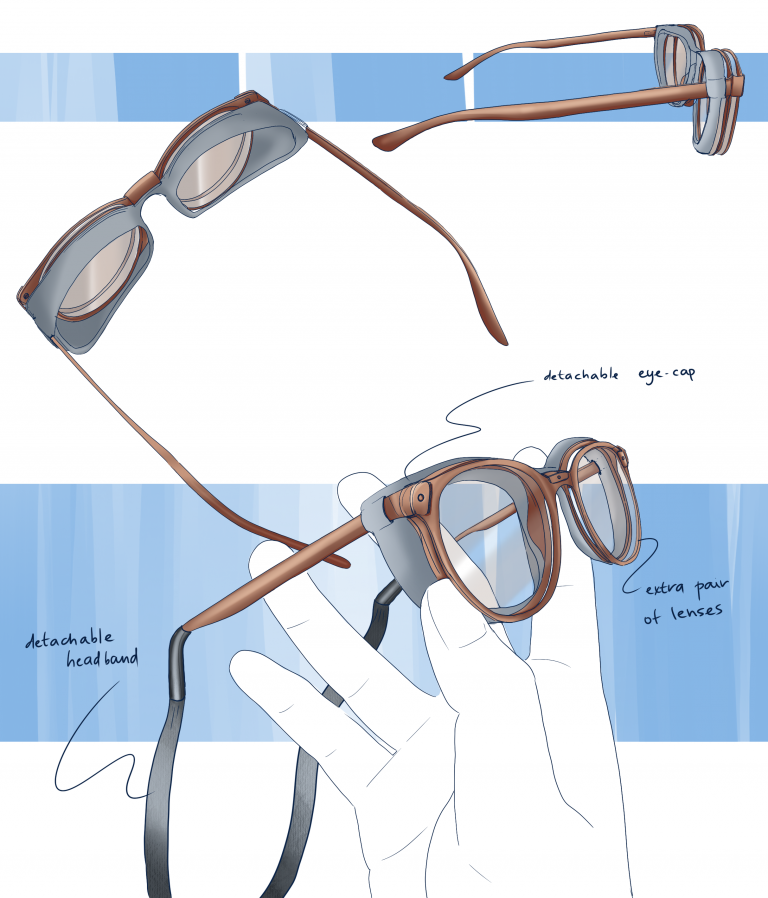
Figure 28
Features
A casual standard pair of glasses
The first feature that the concept consists of is just a standard type of glasses that you can buy at the optician. We have opted for a round casual shape, because the Co-designer has indicated at the Co-design session that she prefers this shape.
Detachable eye cap with sliding mechanism
The second feature incorporated in this concept is the detachable eye cap with the sliding mechanism. (Figures 29,30) The eye cap has the same shape as the standard glasses and has narrow holes on both sides, so that the eye cap can be pushed forward along the temples. Furthermore, the eye cap also has ventilation holes, so that the glasses do not fog up.
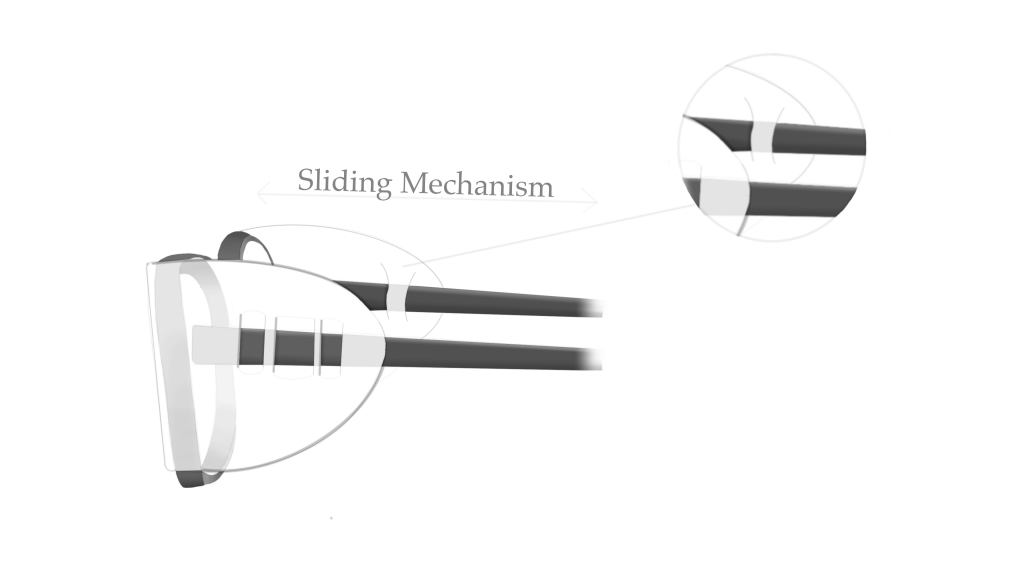
Figure 29
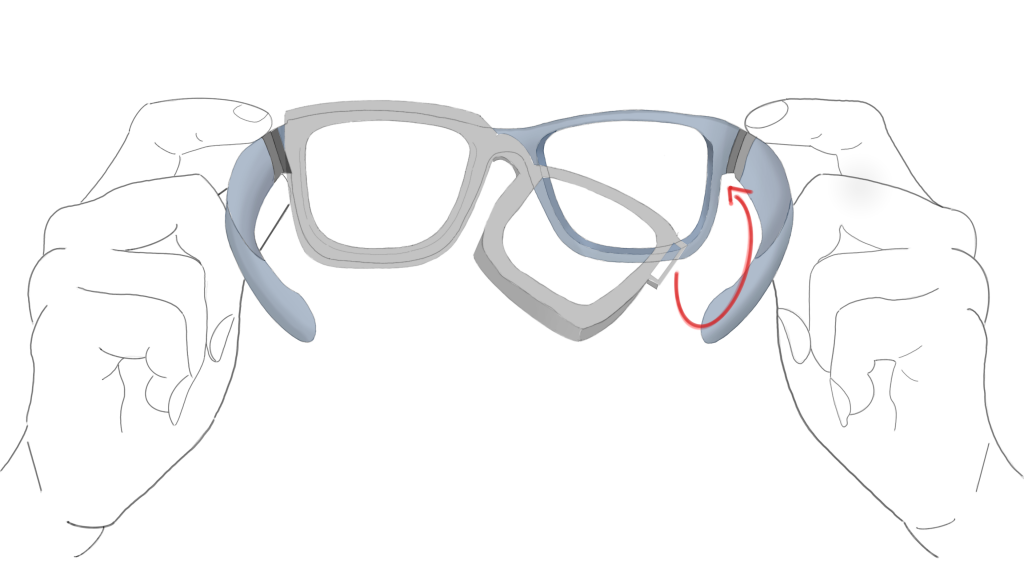
Figure 30
Extra pair of lenses
The various meetings with the Co-designer have shown that she very often has situations in which she has to wear several glasses on top of each other at the same time. That is why the extra pair of lenses is also a feature incorporated in this concept. The extra pair of lenses has the same shape as the glasses and the two extra lenses are connected to each other in one frame.
Mechanism to connect extra pair of lenses
This extra pair of lenses must be connected to the standard glasses and there is a mechanism to ensure that these lenses can be attached and detached from the standard glasses. This mechanism is a click mechanism that consists of a piece of leather with a small knob on it (mounted on the standard glasses). (Figure 31) Furthermore, it consists of a small hole in which this knob can be clicked (mounted on the extra pair of lenses).
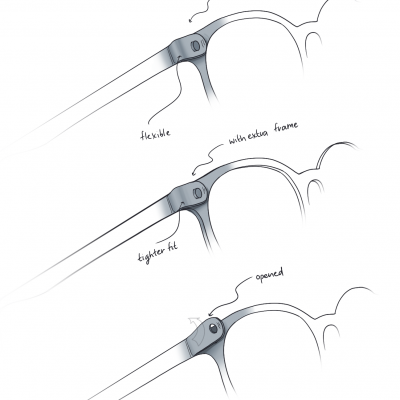
Figure 31
Detachable Headband
Another feature that emerged from the Co-design session is the detachable headband. The designed glasses will have more weight at the front due to the extra pair of lenses and the headband ensures that when the Co-designer bends over, the glasses do not fall off her face. Furthermore, the headband also has the function that the glasses and the eye cap can be adjusted tighter or looser around your face and this ensures that the glasses can be worn with different symptoms.
Moisture Chamber
Finally, the feature ‘the moisture chamber’ has been added to the concept (Figure 32) The moisture chamber is mounted on the inside of the eye cap and ensures that the eyes remain moist enough. As can be seen on the following sketch, this works by placing water drops on a sponge and then attaching this to the inside of the eye cap.
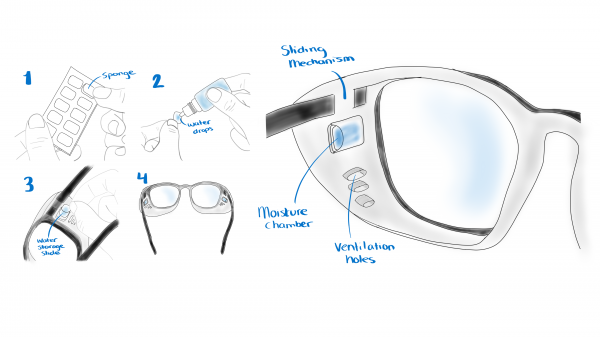
Figure 32
why this concept
The features of concept 1 have not been incorporated into the final concept, because the mechanism for sliding in the lenses can be wobbly and the frame of the standard glasses also has to be adjusted a lot in thickness. Furthermore, the clicking mechanism (Appendix A: different existing connections) of the eye cap was not selected for the final concept, because it must be easy to place for the Co-designer (Co-design Results) and this clicking system with different ribs does not meet this requirement.
The features of concept 2 also have not been incorporated into the final concept. In the Co-design session it was asked whether it is useful to use a large lens instead of two. But it turns out that this is not possible because her two eyes may differ from each other and this may also change in the future. Furthermore, the magnet mechanism is also discarded due to the fact that our Co-designer has to clean the glasses very often due to the moisture in the glasses.
